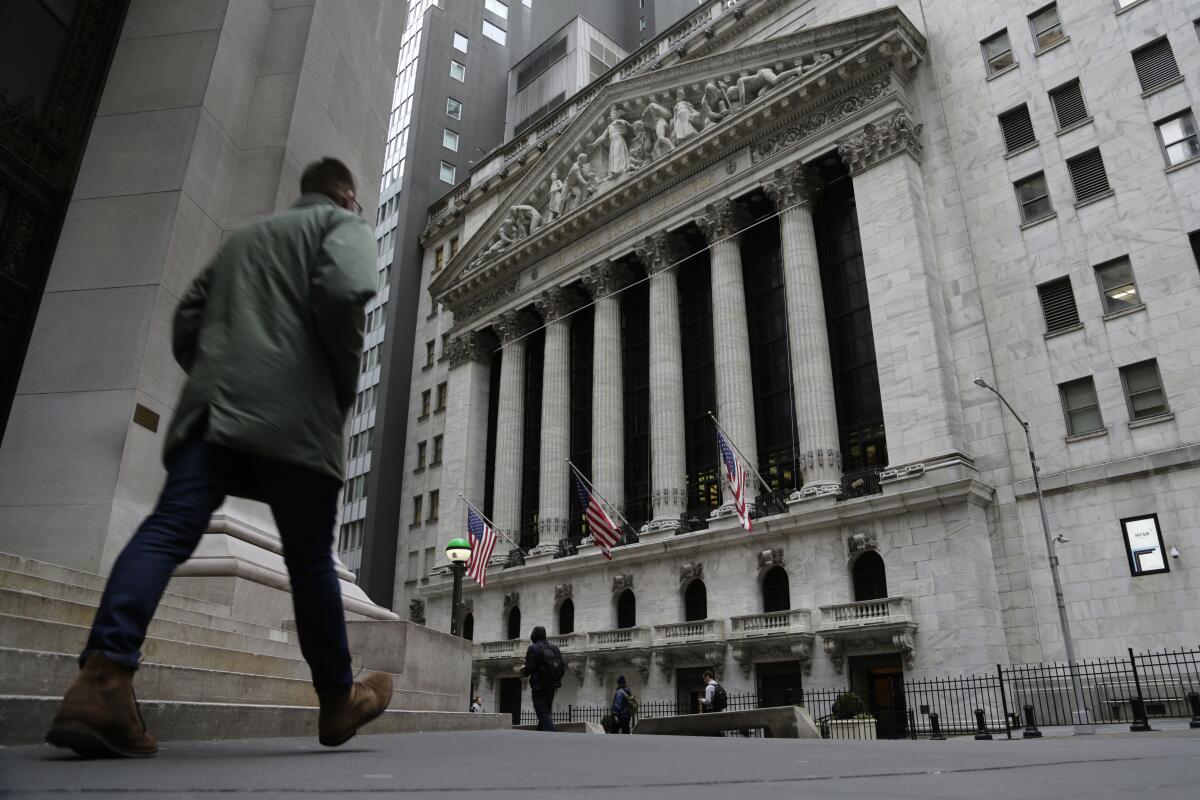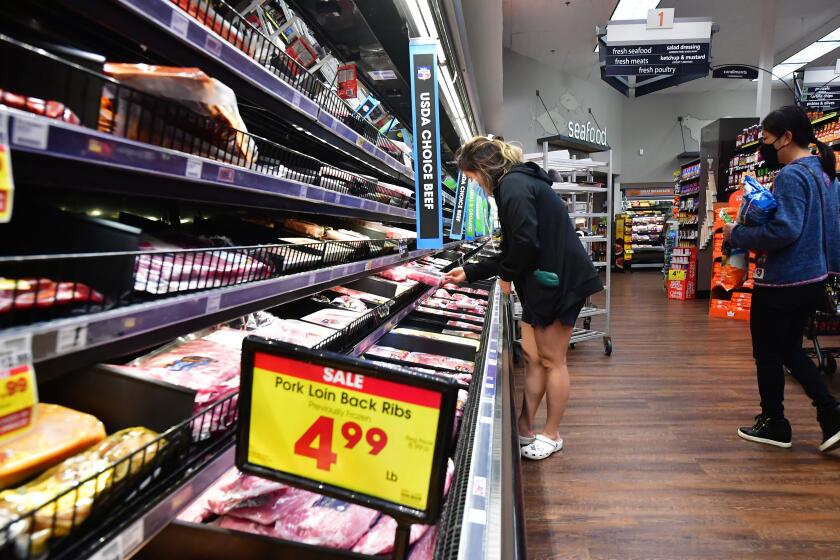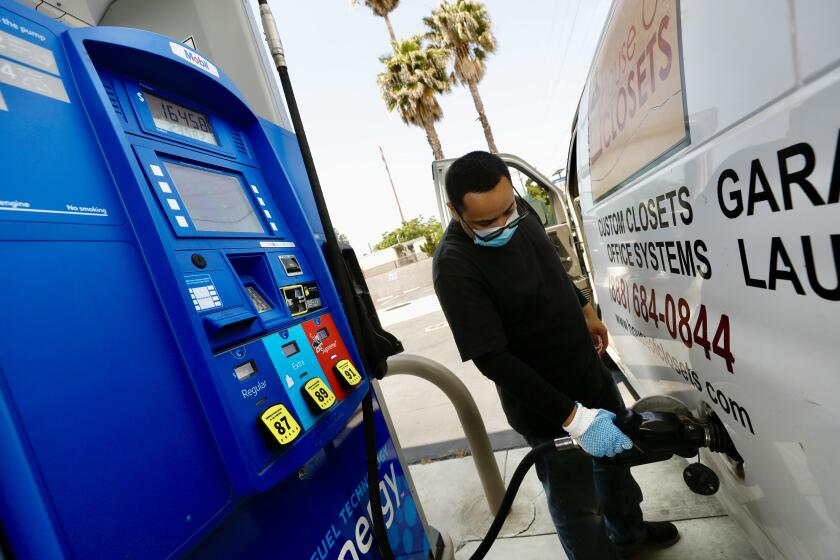Metaâs surge fuels big Wall Street rally

Wall Street rallied to its best day since January after Meta Platforms on Thursday became the latest large tech company to blow past profit expectations and reports painted a mixed picture of the U.S. economy.
The Standard & Poorâs 500 jumped 2% to erase all its losses from what had been a tough week so far. The Dow Jones industrial average climbed 524 points, or 1.6%, while the Nasdaq composite led the market with a 2.4% gain.
Facebookâs parent company did some of the heaviest lifting, and it jumped 13.9%. Not only did Meta beat analystsâ estimates for profit during the first three months of the year, it also gave a forecast for revenue that topped expectations.
It joined Microsoft and Alphabet, which reported better-than-expected results earlier in the week, and Amazon followed suit after trading closed for the day. Theyâre among the most influential stocks on Wall Street indexes because theyâre some of the biggest.
The majority of companies have been beating profit forecasts so far this reporting season. Hasbro climbed 14.6% and Comcast rose 10.3% after they too topped Wall Streetâs estimates. But expectations were broadly low coming into this reporting season because of still-high inflation, much higher interest rates and a slowing economy.
A report on Thursday gave the first indication of just how much the U.S. economy is slowing: down to an estimated 1.1% growth at an annual rate during the first three months of 2023 from 2.6% at the end of last year. That was worse than expected, but the economy may be in better shape than it looks.
If rising prices are stressing your finances, here are some things you can do.
Underneath the surface, the report showed strength at the economyâs core, with growth in spending by consumers and other areas accelerating. Much of the weakness was related to businesses thinning out inventories. Also within the data, though, was a measure of inflation that the Fed likes to use, which came in hotter than hoped.
A separate report also showed that fewer workers applied for unemployment benefits last week, raising hope that the job market may be remaining resilient as other areas slow.
âIn our view, pulled all together, the conflicting data signals to us that we are in the âbend, not breakâ phase of the cycleâ for the economy, said Alexandra Wilson-Elizondo, co-head of portfolio management for multi-asset solutions at Goldman Sachs Asset Management.
As a whole, investors took the data to mean the Federal Reserve will see the economy is still strong enough to handle another hike to interest rates at its next meeting next week.
The Fed has been raising rates at a furious pace since early last year, up to the highest level since 2007 from its record low. Itâs doing so in hopes of getting the nationâs high inflation under control, but high rates do that by slowing the entire economy and hurting prices for investments.
Treasury yields jumped immediately after the economic reports hit Wall Street as traders upped their forecasts for the Fed and rates.
Mixed signals â including layoffs, strong job growth and lingering inflation â have clouded the U.S. economic outlook.
The yield on the 10-year Treasury rose to 3.52% from 3.45% late Wednesday. It helps set rates for mortgages and other important loans.
The two-year yield, which moves more on expectations for the Fed, rose more aggressively, up to 4.08% from 3.95%.
High rates have hit some areas of the economy particularly hard, including the housing and manufacturing industries. Banks have also come under pressure amid fears that scared customers may suddenly pull out all their deposits at once.
The hunt has been on for potential weak links, and Wall Streetâs spotlight has been particularly harsh on First Republic Bank. Its stock has more than halved this week after it gave details about how much in deposits its customers pulled out following the second- and third-largest U.S. bank failures in history last month.
Its stock steadied a bit Thursday, rising 8.8%.
The larger worry is that the banking industryâs struggles could lead to a pullback in lending across the economy. That in turn could tighten the brakes even further, acting almost like another hike to interest rates.
That has many investors preparing for a possible recession this year, which could mean further hits to corporate profits. Itâs also why investors have been paying just as much, if not more, attention to what companies say about their upcoming results as what they actually did in the past three months.
Caterpillar, which is considered a bellwether for the global economy, slipped 0.9% despite reporting stronger profit and revenue for the latest quarter than expected. Analysts pointed to concerns that its profitability may have maxed out. It also benefited from a bigger-than-expected buildup in dealer inventories.
Crocs tumbled 15.9% despite reporting stronger profit and revenue for its latest quarter than expected. The footwear company gave financial forecasts for the current quarter that fell short of some analystsâ expectations.
All told, the S&P 500 rose 79.36 points to 4,135.35. The Dow advanced 524.29 points to 33,826.16, and the Nasdaq climbed 287.89 points to 12,142.24.
In markets overseas, stock indexes were mixed in Europe and modestly higher across much of Asia.
Japanâs Nikkei 225 rose 0.1% as the Bank of Japan began a two-day monetary policy meeting under its new governor, Kazuo Ueda. No immediate change is expected to the nationâs super-easy monetary policy.
More to Read
Inside the business of entertainment
The Wide Shot brings you news, analysis and insights on everything from streaming wars to production â and what it all means for the future.
You may occasionally receive promotional content from the Los Angeles Times.












